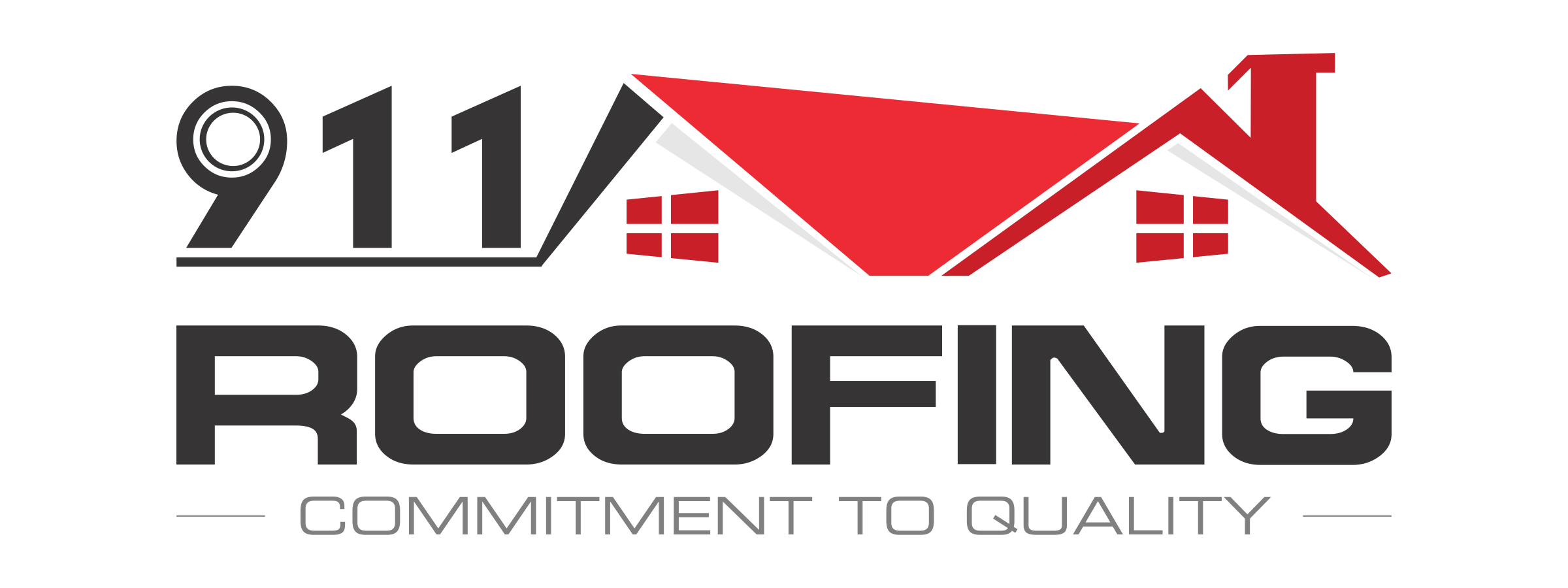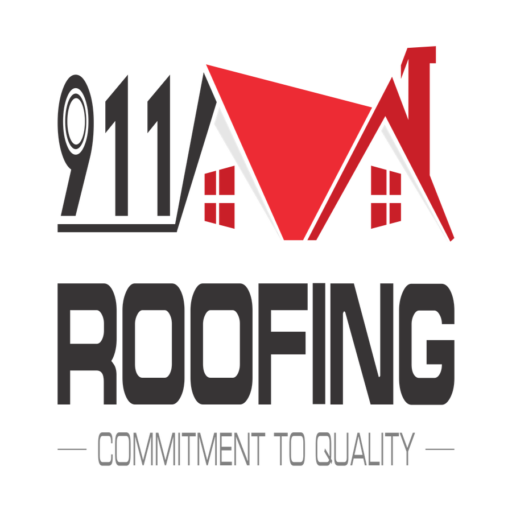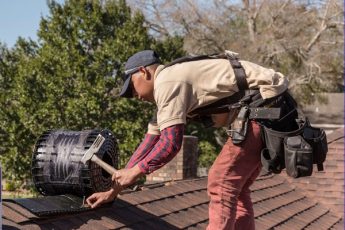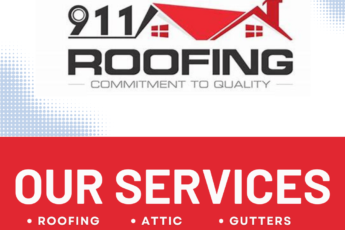Expert tips from 911 Roofing team to protect your roof for snow, ice and blizzard
Winter weather can wreak havoc on your roof, with ice, snow, and blizzards posing significant threats. Ensuring the integrity of your roof during the colder months is crucial to prevent costly repairs and potential damage to your home. In this article, we will provide essential tips to protect your roof from winter weather, keeping it safe and secure.
From keeping gutters clear of ice dams to inspecting for loose or damaged shingles, we will guide you through the necessary steps to fortify your roof against the elements. Additionally, we will explore the importance of proper insulation and ventilation to prevent ice dams and minimize energy loss.
With years of experience in dealing with various winter weather conditions, 911 Roofing have gathered practical advice that will help you safeguard your roof from potential damage. By following our tips, you can have peace of mind, knowing that your roof is prepared to withstand whatever winter throws its way.
Don’t let winter weather catch you off guard. Learn how to protect your roof and ensure the safety of your home during the colder months. Read on for expert insights and actionable steps to keep your roof in top-notch condition all winter long. However, if you are still having any issue with your roof, Please feel free to Contact 911 Roofing for repairs and estimates.
Understanding the impact of winter weather on roofs
Winter weather can be harsh and unforgiving, especially for your roof. The combination of ice, snow, and blizzards can create a perfect storm of potential damage. Understanding how winter weather affects your roof is the first step to protecting it.
Snow, when left on your roof for extended periods, can accumulate and add significant weight. This extra weight puts stress on the structure, potentially leading to structural damage or even a collapse. Additionally, snow can melt and refreeze, forming ice dams that block proper drainage and cause water to seep into your home.
Ice dams are not the only concern during winter. Freezing temperatures can cause shingles to become brittle and crack, making them more susceptible to leaks. The expansion and contraction of materials due to temperature fluctuations can also lead to loose or damaged shingles.
Proper insulation and ventilation play a crucial role in preventing winter roof damage. Without adequate insulation, warm air from your home can escape through the roof, causing snow to melt and refreeze as ice dams. Poor ventilation can trap moisture, leading to mold growth and rotting of the roof deck.
Signs of damage caused by ice, snow, and blizzards
To protect your roof effectively, it is essential to be aware of the signs of damage caused by winter weather. Timely identification of problems allows for prompt repairs, preventing further deterioration.
One common sign of damage is the presence of water stains or leaks on your ceiling or walls. These indicate that melting snow or ice dams have breached the roof’s protective barrier. Inspect your attic regularly for any signs of moisture or dampness, as these can be early indicators of roof damage.
Another visible sign of winter damage is missing or damaged shingles. Strong winds, heavy snow, and ice can loosen or break shingles, leaving your roof vulnerable to leaks. Conducting visual inspections from the ground or hiring a professional to assess your roof can help identify any areas of concern.
Additionally, icicles hanging from your roof may seem picturesque, but they can pose a danger. Large icicles can fall unexpectedly, causing injury or damage to your property. If you notice excessive icicle formation, it is crucial to address the root cause, such as poor insulation or inadequate ventilation.
Importance of regular roof maintenance
Regular roof maintenance is essential year-round, but it becomes even more critical during the winter months. By staying proactive and addressing potential issues before they escalate, you can save yourself from costly repairs and headaches down the line.
Start by scheduling a professional inspection of your roof before winter arrives. A trained roofer can identify any pre-existing issues and recommend necessary repairs or improvements. This proactive approach ensures your roof is in optimal condition to withstand winter weather.
In addition to professional inspections, there are several maintenance tasks you can perform yourself. Keep your gutters clean and free from debris to prevent ice dams from forming. Trim overhanging tree branches that could potentially damage your roof during heavy snowfall or storms. Regularly check for loose or damaged shingles and replace them promptly.
Maintaining the integrity of your roof also involves addressing any insulation or ventilation issues. Properly insulating your attic prevents warm air from escaping, reducing the risk of ice dams. Adequate ventilation allows for the release of moisture, preventing mold growth and extending the lifespan of your roof.
Preparing your roof for winter
Before the first snowflake falls, it’s crucial to prepare your roof for the impending winter weather. Following these steps will help fortify your roof and protect it from potential damage.
Start by cleaning your gutters thoroughly. Remove any leaves, twigs, or debris that may be clogging the gutters and downspouts. Clogged gutters can lead to ice dams, causing water to back up and seep into your home. Consider installing gutter guards to prevent debris buildup and enhance water flow.
Next, inspect your roof for any loose or damaged shingles. Replace any missing or broken shingles to ensure your roof is airtight and can withstand heavy snowfall. Addressing these issues before winter arrives will minimize the risk of leaks and structural damage.
Additionally, check the flashing around chimneys, vents, and skylights. Damaged or deteriorating flashing can allow water to penetrate your roof, leading to leaks and water damage. Replace any worn-out flashing to maintain a watertight seal.
Finally, trim any overhanging tree branches that could potentially fall onto your roof during a winter storm. Heavy snow or ice accumulation can cause weak branches to break and damage your roof. By removing these hazards, you reduce the risk of costly repairs and ensure the safety of your home.
Clearing snow and ice from your roof
After a heavy snowfall, it is essential to remove snow and ice from your roof promptly. While it may be tempting to let nature take its course, the weight of accumulated snow can put excessive stress on your roof’s structure.
When clearing snow from your roof, it is crucial to prioritize safety. Avoid climbing onto the roof if possible, as it can be slippery and dangerous. Instead, use a roof rake with an extended handle to remove snow from the ground. Start from the edge and work your way up, being careful not to damage the shingles.
If you must climb onto the roof, use a sturdy ladder and wear appropriate safety equipment, such as non-slip boots and a harness. Clear snow from flat or low-sloped roofs using a snow shovel, working in a methodical and cautious manner. Be mindful of potential hazards, such as ice patches or hidden debris.
When it comes to removing ice dams, it is best to consult a professional. Trying to remove ice dams yourself can lead to further damage if not done correctly. A professional roofer will have the necessary tools and expertise to safely and effectively eliminate ice dams without causing harm to your roof.
Preventing ice dams
Ice dams are a common problem during winter, but with proper prevention measures, you can minimize their occurrence and protect your roof from damage.
One effective method of preventing ice dams is to ensure your attic is properly insulated. Adequate insulation keeps the warm air inside your home, preventing it from escaping and melting snow on the roof. Consult with an insulation expert to determine if your attic insulation meets the recommended levels for your region.
Proper ventilation in your attic is equally important in preventing ice dams. Good ventilation allows for the release of moisture and helps regulate the temperature in your attic. Ensure that vents are not obstructed and that air can circulate freely. Installing ridge vents, soffit vents, or powered attic fans can improve ventilation and reduce the risk of ice dams.
In addition to insulation and ventilation, sealing air leaks in your attic can further prevent ice dams. Look for any gaps or cracks around chimneys, vents, or light fixtures and seal them with caulk or foam insulation. By sealing these air leaks, you reduce the chance of warm air escaping into the attic and causing snow to melt.
Roof insulation and ventilation in winter
Proper insulation and ventilation are crucial for maintaining the integrity of your roof throughout the winter months. These measures not only protect against ice dams but also help preserve energy and prevent heat loss.
Start by checking your attic insulation to ensure it meets the recommended R-value for your region. In colder climates, a higher R-value is necessary to prevent heat transfer. If your insulation is insufficient, consider adding more to improve energy efficiency and prevent ice dams.
Ventilation plays a significant role in maintaining a healthy roof. It allows air to circulate, removing excess moisture and preventing the buildup of condensation. Properly installed soffit vents, ridge vents, or powered attic fans promote airflow and help regulate temperature and humidity levels in your attic.
During the winter months, it is essential to strike a balance between insulation and ventilation. Insulation keeps warm air from escaping, while ventilation removes excess moisture. Properly sealed air leaks and well-maintained insulation and ventilation systems work together to create a healthy and efficient roof environment.
Hiring professional roofers for winter maintenance
While some roof maintenance tasks can be done by homeowners, certain aspects are best left to professionals, especially during the winter months. Hiring a professional roofer for winter maintenance ensures that the job is done safely and effectively.
Professional roofers have the experience and knowledge to identify potential issues that may go unnoticed by an untrained eye. They can perform a thorough inspection, address any existing problems, and recommend the best course of action.
When it comes to snow removal, professional roofers have the necessary equipment and expertise to safely clear your roof without causing damage. They can remove snow and ice dams efficiently, minimizing the risk of injury and preserving the integrity of your roof.
In addition to inspections and snow removal, professional roofers can also handle emergency repairs during winter. If you notice signs of damage or experience a roof leak, contacting a professional roofer immediately is crucial to prevent further damage to your home.
Emergency roof repairs during winter
Despite taking preventative measures, emergencies may still arise during the winter months. It’s essential to know how to handle these situations to minimize damage and protect your home.
If you discover a roof leak during winter, act promptly to prevent further water damage. Place buckets or containers under the leak to catch dripping water and prevent it from spreading. Use towels or rags to soak up excess moisture and prevent it from seeping into walls or ceilings.
Contact a professional roofer as soon as possible to assess the situation and perform emergency repairs. Attempting to fix the problem yourself may worsen the damage or put your safety at risk. Professional roofers have the expertise and equipment to handle emergency situations effectively.
In case of a roof collapse or significant structural damage, evacuate your home immediately and call the appropriate emergency services. Do not attempt to enter the affected area until it has been deemed safe by professionals.
Conclusion: Keeping your roof safe during winter weather.
Protecting your roof from the harsh winter weather is essential to keep your home safe and secure. By understanding the impact of ice, snow, and blizzards on your roof, identifying signs of damage, and practicing regular maintenance, you can fortify your roof against the elements.
Preparation is key to maintaining a healthy roof throughout the winter months. Clearing snow and ice, preventing ice dams, and ensuring proper insulation and ventilation are crucial steps in safeguarding your roof. Hiring professional roofers for winter maintenance and addressing emergency repairs promptly will further protect your home.
Don’t let winter weather catch you off guard. By following these essential tips, you can have peace of mind, knowing that your roof is prepared to withstand whatever winter throws its way. Stay proactive, stay safe, and keep your roof in top-notch condition all winter long.
We hope that you will be able to have a safe and secure winter by following our advice. In case you still need any professional help of need to repair your roof, please feel free to contact the 911 Roofing team for your help in Detroit Area.









